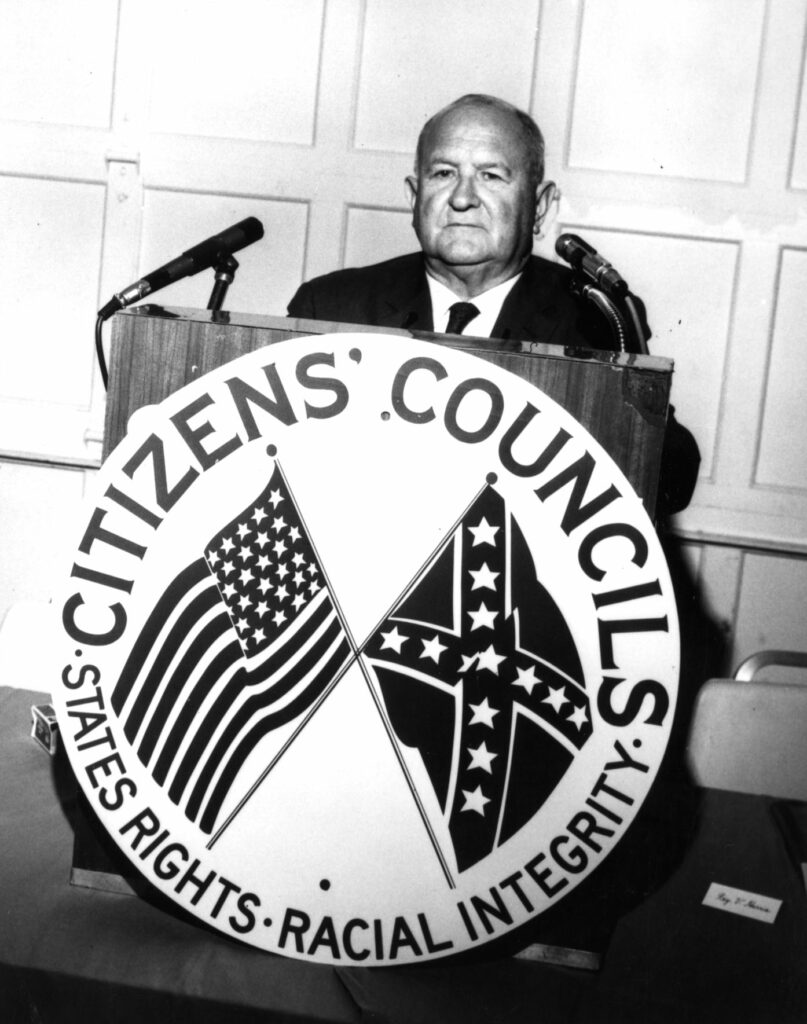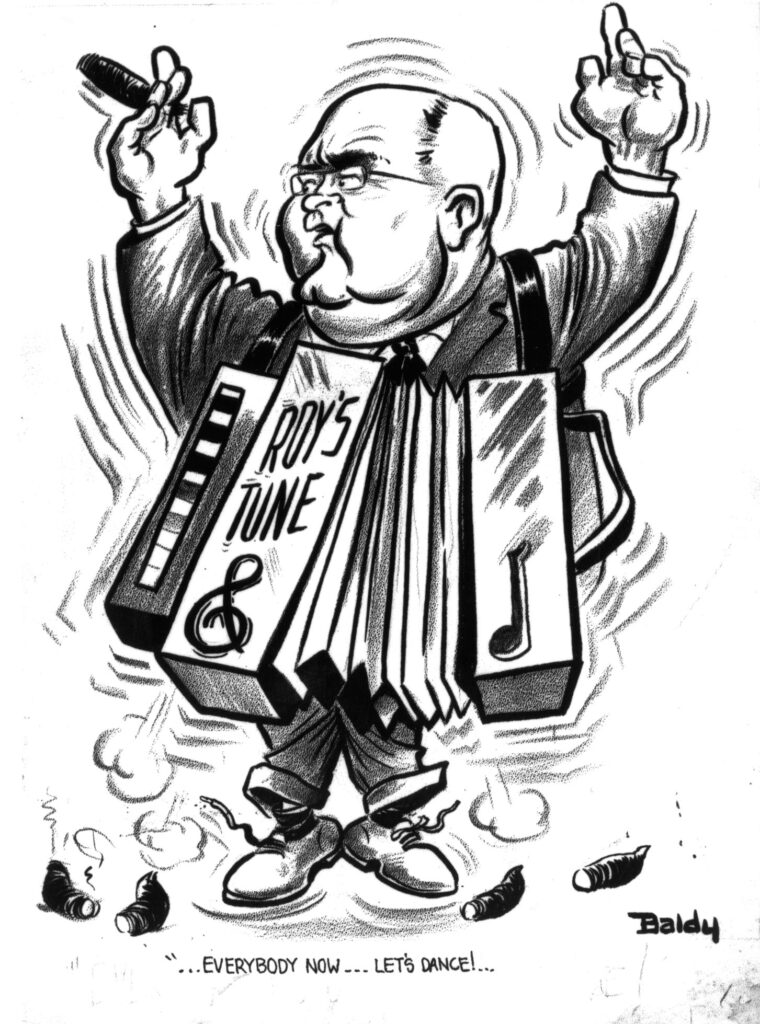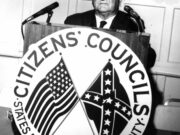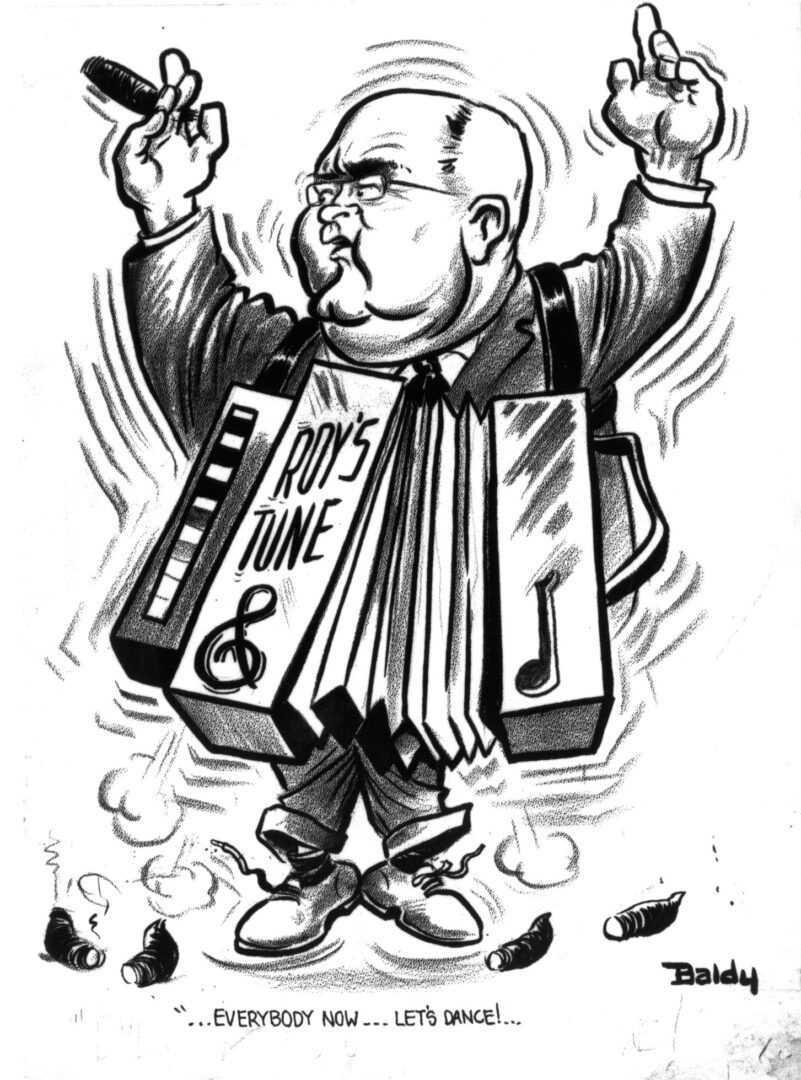Roy V. Harris spent more than half a century in Georgia politics. Labeled a “kingmaker” for his ability to place candidates he supported in the governor’s mansion, he worked equally hard to oppose civil rights.
Roy Vincent Harris was born on October 2, 1895, in Glascock County to Elizabeth Allen and James Robert Harris. The family later moved to Wrens, in Jefferson County, where Harris attended high school. In 1917 he received his undergraduate degree from the University of Georgia (UGA) and then joined the army, rising from the rank of private to first lieutenant in less than two years. Upon returning home he again enrolled at UGA and earned a law degree in 1919. In 1935 he married Mary Lewis of Augusta, and they had one son, Roy Jr.

Courtesy of Hargrett Rare Book and Manuscript Library, University of Georgia Libraries.
Harris began his lengthy political career within a few years of finishing law school. In 1921 the voters in Jefferson County elected him to the state legislature, where he served until 1928. Harris moved permanently to Augusta in 1931 and that same year he was elected to the state senate. Two years later, in 1933, he was again elected to the legislature, this time serving uninterrupted until losing a bid for reelection in 1946. During his time in the legislature Harris served as Speaker of the House twice (1937-40 and 1943-46).
While serving in the legislature, Harris accumulated a great deal of political power, and he became adept at using the county unit system to help pass legislation and get candidates elected. He gained a reputation as a “kingmaker,” leading to a popular saying of politicians during Harris’s era: “What do you need to be elected governor in Georgia? Fifty thousand dollars and Roy Harris.” Harris played prominent roles in the gubernatorial victories of Ellis Arnall, Eugene Talmadge, Herman Talmadge, and Ernest Vandiver. He worked particularly hard behind the scenes for Herman Talmadge during the “three governors controversy” of 1946-47.
Harris maintained a commitment to improving public education in Georgia throughout his adult life. In 1933, after the Board of Regents of the University System of Georgia voted to close the Medical College of Georgia (later Georgia Health Sciences University) at the height of the depression, Harris used his influence with Governor Eugene Talmadge to reverse the board’s decision and save the school from closure. Harris maintained a close relationship with UGA, the state’s flagship university in Athens, and worked to improve the school’s educational standards as well as to convince the legislature to appropriate the funding needed to improve and expand the campus. He also arranged for funding for a new building at the Georgia Institute of Technology during this period. In 1951 Governor Herman Talmadge appointed Harris to the Board of Regents, a position he held from 1951 to 1958 and again from 1960 to 1974.

Courtesy of Richard B. Russell Library for Political Research and Studies, University of Georgia Libraries.
Harris used his position on the Board of Regents to fight college and university desegregation. He strongly opposed the integration of UGA and praised the white students who started a riot on January 11, 1961, against desegregation on the campus. After the two Black students who attempted integration—Charlayne Hunter and Hamilton Holmes —were removed from campus, Harris demanded a list of the 340 faculty members who signed a petition calling for their return.
Harris used the Augusta Courier, a tabloid newspaper he founded in 1946 and edited from 1947 to 1974, to spread his segregationist message. Headlines appeared in bright red ink, and most articles focused on the inferiority of African Americans, the evils of integration, and the need to defeat liberals. In 1953 Harris and the Courier got into a battle of words with the editors of the UGA student newspaper, the Red and Black. Blasting the pro-integration position of the Red and Black, voiced by columnist Bill Shipp and others, Harris took advantage of his political connections to have a resolution introduced in the state legislature calling for the removal of the student journalists, effectively causing their resignation soon after.
Harris remained an ardent segregationist throughout the civil rights movement of the 1960s. He belonged to the Citizens’ Councils of America, a white segregationist organization formed in response to the 1954 Brown v. Board of Education decision, which called for the desegregation of public schools. He served as the group’s president from 1958 to 1966. In 1968 he broke with southern Democrats and supported former Alabama governor George Wallace’s bid for U.S. president, serving on Wallace’s Georgia campaign committee. Like Wallace, Harris mellowed in his views somewhat as they fell out of fashion in the 1970s. In 1982 Harris began a term as city attorney for newly elected Augusta mayor Ed McIntyre, the first African American mayor of Augusta. In explaining his support for the new mayor, Harris stated that he felt McIntyre was better qualified for the position than his opponent, a local white businessman.
Harris died on January 21, 1985, at the age of eighty-nine. His papers are held at the Richard B. Russell Library for Political Research and Studies at UGA.








